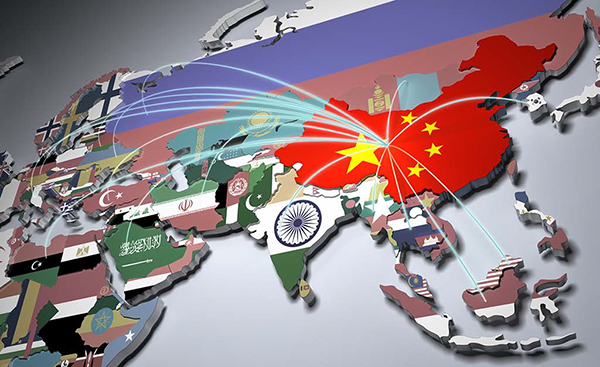This is an opportune moment to invest in China and East Asia more broadly, albeit it comes with several caveats.
China is desperate for foreign investment. It is easy to see why. In 1980, China tied with India for per capita GDP, and now China’s per capita GDP is more than double India’s. This phenomenal economic prosperity has been the result of the meteoric rise of production in China, and that meteoric rise has been the result of China’s export focus. China’s share of world production went from about 2.5% of the world’s GDP in 1980 to 15% in 2018, and it will continue to increase. The incentive to bolster China’s (and especially the Chinese Communist Party’s) wealth is too strong for anybody to ignore.
Nevertheless, over the past few years, standing up to China has received political support in the EU and it has even received bipartisan support in the US. The list of Chinese transgressions includes both economic motives such as intellectual property, impacts to domestic employment, and violations of a host of WTO rules as well as humanitarian concerns such as labor rights, the treatment of the Uighurs, forcing dissidents into organ harvesting schemes, and failure to honor commitments to Hong Kong.
The past few years and China’s response to the COVID epidemic have shaken the confidence of foreign investors. Diplomatically, China has threatened Japan, Australia, and India, and has developed plans to invade Taiwan. Furthermore, China has tightened currency flows in order to shore up its economy and deepen its control, which means that foreign investment in China will be less mobile—not particularly attractive to many investors.
Nevertheless, the US, EU, and other countries will continue to do trade with China. The list of foreign companies exerting their influence on US, EU, and other policy makers is extensive, such as Apple’s attempt at watering down a proposed US law that would enforce anti-slavery measures in the supply chain.
The most important indicator that the world will continue to trade with China is Biden’s election. The new President has been welcomed by China, and for good reason. Biden is on record for supporting Kissinger’s soft stance on China and his designated national security advisor, Jake Sullivan, is on record for continuing to support China’s rise because (in his words), “...a thriving China is good for Europe, good for the United States, and good for Asia…”.
Even though all indications are that the next Presidential administration will attempt to “reset” US-China relations, not all will go back to normal, and it won’t happen immediately. Biden’s executive order on sustainable public health supply chains shows that the government feels obligated to retain some US business capability for obvious reasons.
China is its own worst enemy as its behavior does little to create trust among its regional trading partners. Its focus on itself over regional allies, particularly treatment of Belt and Road Initiative partners, has emboldened countries like Vietnam and the Philippines to pick up business that used to go to China. India’s sidelining of Chinese telecoms has come at a particularly damaging time for an industry where China hoped to become a leading innovator—instead, India has repositioned itself as a competitor while depriving China of perhaps its most critical foreign market.
All this means that as the COVID pandemic diminishes, China will become desperate for foreign investors and Western business approaches that focus on innovation and services. China’s decades of experience as the critical link in the world’s supply chains assure that the US and allies need China.
China and the US have been the ultimate divided parents, and this seems most likely to continue. As anybody who has siblings knows, divided parents can provide a bonanza if the siblings work together. Both the US and China have reasons to continue trade, China so that it can continue to prosper, and the US to prevent destabilization of the world’s largest (or at least soon to be largest) economy. Playing off one parent against the other seems like a surefire supply chain strategy over the next few years.
SC
MR


Latest Supply Chain News
- How CPG brands can deliver on supplier diversity promises
- How S&OP provides the answer to in-demand products
- AI, virtual reality is bringing experiential learning into the modern age
- Humanoid robots’ place in an intralogistics smart robot strategy
- Tips for CIOs to overcome technology talent acquisition troubles
- More News
Latest Podcast

 Explore
Explore
Business Management News
- How CPG brands can deliver on supplier diversity promises
- How S&OP provides the answer to in-demand products
- AI, virtual reality is bringing experiential learning into the modern age
- Tips for CIOs to overcome technology talent acquisition troubles
- There is still work to do to achieve supply chain stability
- Blooming success: The vital role of S&OE in nurturing global supply chains
- More Business Management
Latest Business Management Resources

Subscribe

Supply Chain Management Review delivers the best industry content.

Editors’ Picks





